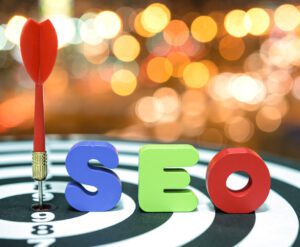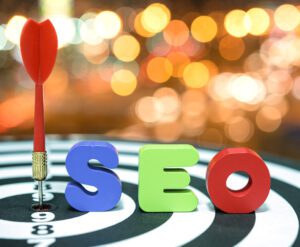In the ever-evolving digital marketing landscape, capturing your target audience’s attention is half the battle. Once a popular tactic, clickbait has lost its charm due to audience fatigue and the demand for more authentic, valuable content. Enter the era of AI-powered content marketing, where the fusion of artificial intelligence and creative ingenuity is revolutionizing how brands engage with their audience. This post explores the transition from clickbait to click-worthy content and how AI plays a pivotal role in this paradigm shift.
What is Clickbait?
Clickbait attracts attention and generates clicks on websites or social media platforms. It often involves using exaggerated or misleading content to entice people to click on a link or view a webpage. This can be seen in sensationalist headlines, misleading thumbnails, or deceptive advertising. Clickbait aims to drive traffic to a particular website or page, often at the expense of providing viewers with accurate or valuable information. While it is seen as a deceptive marketing tactic, it is also considered one of the most effective strategies for increasing a web page’s view count. Supporters argue that a catchy and unconventional headline can still accurately represent the content it links to.
Understanding Clickbait’s Shortcomings:
Clickbait is a term used to refer to content that employs sensationalized headlines and misleading thumbnails to entice people to click on the content, regardless of the actual substance or value of the material. However, audiences quickly grew weary of empty promises and content that failed to meet expectations. The negative impact of clickbait on user trust and the overall user experience prompted marketers to seek more sustainable and authentic approaches.
One of the main criticisms of using clickbait strategies in a brand’s marketing efforts is that clickbait has a negative reputation in the market. Clickbait is often associated with fake news and unethical media publications. Using clickbait can be seen as a desperate measure to deceive readers. Even if a brand’s usage of clickbait is not deceptive, the public still views the strategy negatively.
Marketing aims to attract new clients, retain existing ones, and build a positive brand reputation. Clickbait can work against these objectives. Using responsibly can help a brand gain recognition quickly, but it is also a high-risk strategy.
The Rise of AI in Content Marketing:
Artificial Intelligence is changing how content is created for marketing, leading to better returns on investment and business expansion. With its ability to analyze vast amounts of data and identify patterns, Artificial Intelligence reshapes content according to marketing strategies. Machine learning algorithms understand user behavior, preferences, and engagement patterns. This data-driven approach allows marketers to create content that resonates with their audience, moving beyond generic clickbait tactics. Here, we shall discuss how content marketing organizations use artificial intelligence to enhance the effectiveness of their content.
Identify the intent behind the keywords
Since Google’s algorithm, known as RankBrain, was first introduced, it has consistently monitored and understood what users are looking for when they search. As time has passed, the algorithm has become more advanced in analyzing and predicting user preferences. This underscores the importance of creating tailored content to meet users’ needs and intentions.
AI-powered intent analysis improves the quality of your content by enabling you to provide content that aligns with the user’s intention, ultimately boosting your online visibility. Machine learning, a branch of AI, enables systems to learn from data and make informed decisions and predictions. It can identify patterns and user behavior, aiding marketers in understanding visitor intent and selecting the most effective keywords for their business. AI-based tools such as BrightEdge, Concurred, and MarketMuse assist marketers in identifying search intent, conducting topic research, and creating content tailored to specific audiences.
Personalization and Targeting:
Personalization is a significant trend in the content industry because content tailored to individuals positively impacts how customers perceive a brand. Therefore, creating customized and targeted content is currently a top priority for content creators.
Recent improvements in artificial intelligence have enabled the rapid and practical customization of content. Machine learning technology empowers marketers to monitor consumer behavior, preferences, and how they engage with content. This allows them to concentrate on tailoring interactions with customers. Platforms like OneSpot, Granify, CaliberMind, and Personyze utilize machine learning to provide personalized content experiences that enhance engagement and drive conversions.
In particular, Personyze’s Personalization Engine takes it further by generating a detailed real-time visitor profile using various data sources. Additionally, it employs a blend of machine learning algorithms to deliver a personalized, seamless experience across multiple channels for each customer.
AI lets content marketers personalize their approach, tailoring content to specific audience segments. By analyzing user data, AI algorithms can predict individual preferences, delivering content that is relevant and likely to capture attention. Personalized content enhances user engagement and fosters a connection between the brand and the audience.
Predictive Analytics:
Predictive analytics is a valuable tool that uses historical data patterns, statistics, and modeling to predict future outcomes. Combined with artificial intelligence, it can assist businesses in identifying their potential audience and predicting their responses.
For example, Marketo by Adobe is a tool that analyzes your website and suggests content based on your assets, such as videos, white papers, case studies, and blog posts. It uses user data, such as content consumption, profiles, and behavioral patterns, to determine the most effective content for your audience, ultimately guiding them through their customer journey.
Powered by AI, predictive analytics helps marketers anticipate trends and user behavior. By understanding what content is likely to perform well in the future, brands can stay ahead of the curve, creating content that is not only timely but also aligns with the interests of their target audience. This proactive approach minimizes the reliance on sensationalism to attract clicks.
Natural Language Processing (NLP):
Content marketers are struggling to meet the growing demand for content. As a result, many marketers in e-commerce, finance, insurance, and publishing are using AI solutions to produce more content. One specific type of AI natural language generation (NLG) is gaining attention in the content industry. This tool provides real-time content suggestions, enabling marketers to create targeted, personalized content. NLG supports content creators in several ways:
- It analyzes the effectiveness of content and suggests alternative content that matches the style and impact of your website or blog.
- It generates different versions of content tailored to specific user groups, ensuring a more personalized digital experience.
- It assists new or less experienced writers in editing their work.
- It automatically produces editorial text with minimal human involvement.
Natural Language Processing, a subset of AI, enables machines to understand and interpret human language. Content marketers leverage NLP to create compelling, authentic content that resonates with readers. This technology helps in crafting headlines and copy that are not only attention-grabbing but also align with the content providers’ genuine value. E-commerce businesses, for example, must create thousands of product descriptions for their online catalogs. This kind of content can be automatically created through natural language generation, increasing productivity and saving time and resources.
Building Trust and Loyalty:
This strategic shift from sensational clickbait to intelligent, click-worthy content signifies a commitment to quality and substance over mere attention-grabbing tactics. The emphasis on providing value and relevance to the audience builds a connection based on trust. As brands consistently share authentic and informative content, they position themselves as reliable sources of information within their respective industries.
The shift from clickbait to AI-powered, click-worthy content builds trust and fosters long-term relationships with the audience. By delivering valuable, relevant, and authentic content, brands can establish themselves as authorities in their respective industries. This, in turn, leads to increased brand loyalty and a higher likelihood of conversion.








